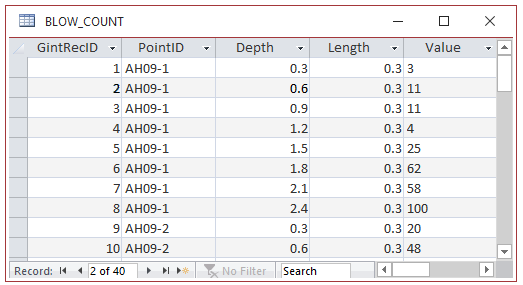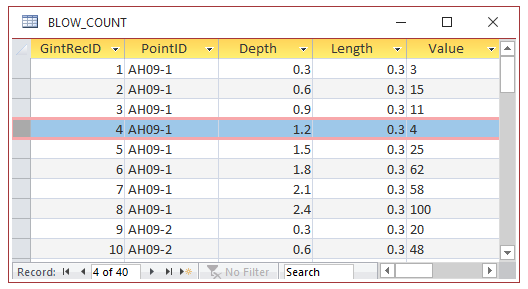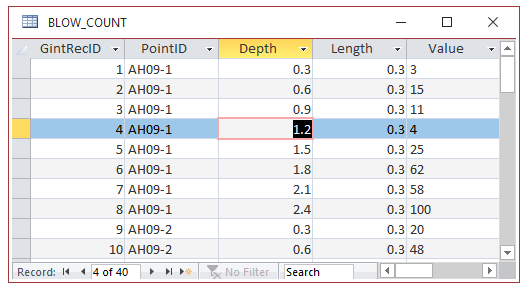What is a Database?
A database is a collection of data on a "subject" such as customers, products, or projects. A database can contain many elements and features. As it relates to loading gINT database files, you need to learn about database Tables, Records and Fields.
Tables
A database table is composed of a series of records that hold data. Tables are also called datasheets. Each table in a database holds data about a different -but related- subject. For example the following figure shows data in a "BLOW_COUNT" table, holding SPT blow counts data for test hole AH09-1.

Records
Data is stored in form of records. A record is composed of fields, and contains all the data about one particular person, company, test or item in a database. In the following example, the selected record contains the data for SPT testing at the depth of 1.2 m, with penetration depth of 0.3 m, and N=4.

Fields
A field is part of a record and contains a single piece of data for the subject of the record. In the database table illustrated below, each record contains 5 fields. Fields appear as columns in a database table.

GintRecID: Each record is identified with a unique record number, in this example, 4,
PointID: Carries information about the test hole name, in this example, AH09-1,
Depth: Shows the depth of the specific SPT test, in this example, 1.2,
Length: Holds the length (penetation) for SPT test at this depth, in this example, 0.3, and
Value: Holds SPT blow counts, in this example, 4.